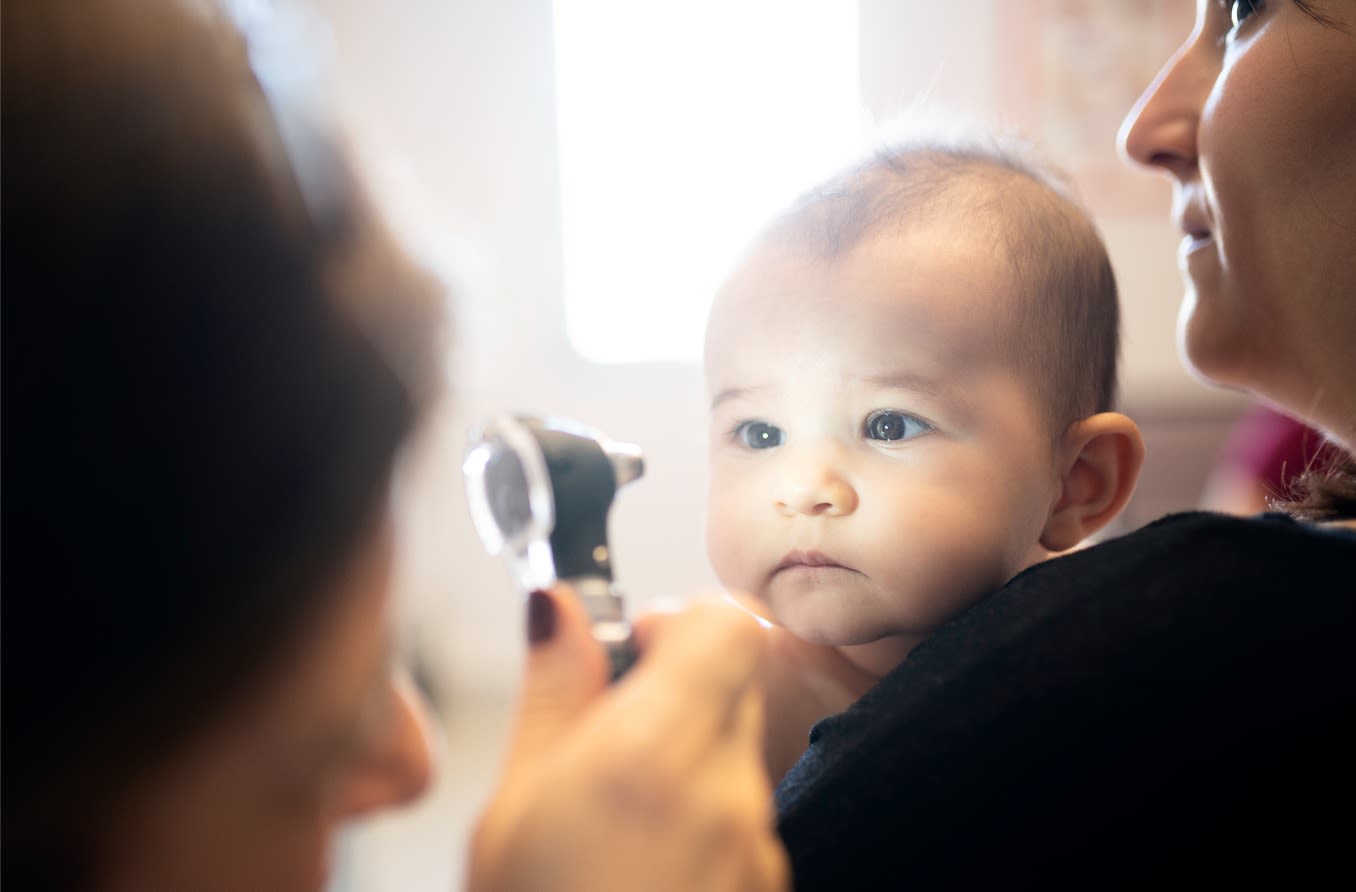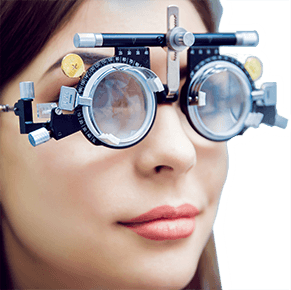Coats’ disease

What is Coats’ disease?
Coats’ disease is an abnormality of the eye’s blood vessels. This rare condition manifests as enlarged, twisted veins that may leak, limiting blood flow and oxygen to the retina. This leakage can damage the retina, which is the part of the eye that converts light into visual signals to the brain.
Coats’ disease takes its name from Scottish ophthalmologist George Coats, who first wrote about the condition in 1908. It is most prevalent in young males, affecting three times more males than females.
If left untreated, Coats’ disease may eventually lead to vision loss and even blindness.
Causes
There is no known cause of Coats’ disease. It is not hereditary – meaning parents cannot pass it on to their children. It is also not tied to a specific race or ethnic background.
It is a very rare disease, with fewer than 200,000 cases in the United States. The exact number of cases is unknown.
Signs and symptoms
Coats’ disease is often unilateral, which means it affects only one eye. Most signs and symptoms begin in childhood, with the average age of diagnosis occurring between 8 and 16 years, and the majority of cases diagnosed before age 10.
A fraction of cases are considered adult-onset, affecting patients 35 and older. Coats’ disease has also afflicted patients as young as 4 months.
Symptoms typically begin between the ages of 6 and 8 years and are more severe in children who develop the disease at a younger age. An earlier onset of Coats’ disease is associated with a more advanced stage of the disease and worse vision.
Early symptoms of Coats’ disease include:
Decreased visual acuity – Vision becomes less clear in one eye.
Depth perception issues – Decreased vision in one eye results in decreased depth perception.
Strabismus – Known colloquially as “crossed eyes,” this is when a person’s eyes are unable to align properly or work together as a team.
Leukocoria – Meaning “white pupil,” this is when a person’s eye reflects back white or yellow, similar to the red eye that occurs in photos.
Amblyopia – Also called “lazy eye,” it is decreased vision in one eye due to abnormal development of the visual system during early childhood.
Pain – In severe cases, a person may experience pain due to increased pressure in the eye.
Nearly 1 in 10 children with the disease may be asymptomatic, with the condition detected during a vision exam.
Diagnosis
An eye doctor can diagnose Coats’ disease with special imaging tests, including:
Ultrasound – A diagnostic procedure using sound waves to evaluate the retina.
Fluorescein angiography – A test involving contrast dye and a specialized camera to see and evaluate blood flow of the eye.
Optical coherence tomography (OCT) – A test that uses light waves to take images and look to the back of the eye and the optic nerve.
Optical coherence tomography angiography (OCTA) – A technique to take images of the eye’s vascular structure (the blood vessels, arteries and nerves).
Coats’ disease shares some of the same symptoms as other, even more serious conditions. This includes retinoblastoma, a life-threatening type of eye cancer.
Stages of Coats’ disease
There are five stages of Coats’ disease:
Stage one – In this early stage, testing will reveal enlarged or twisted blood vessels. But at this stage, no leakage has occurred and there are few changes to vision or the retina.
Stage two – In this stage, leaking has begun and pressure is building in the retina. Vision may begin to change.
Stage three – In the third stage, the continued buildup of pressure in the eye may cause the retina to partially detach. By this point, vision is becoming poor.
Stage four – In this stage, the pressure has developed into glaucoma, which causes damage to the optic nerve. The retina has completely detached during this stage, and vision is very poor.
Stage five – In this advanced stage, vision has greatly diminished. This final stage may lead to total loss of vision in the affected eye.
Complications
As it progresses, Coats’ disease can result in numerous complications, including:
Iris discoloration – The iris (the colored part of the eye) becomes a reddish tint when new blood vessels develop on its surface. This can result in rubeosis iridis or neovascular glaucoma.
Uveitis – Eye inflammation that can cause eye pain and light sensitivity.
Orbital cellulitis – An infection of the soft tissues of the eye socket. Symptoms commonly include eye redness, bulging of the eyeball and eyelid inflammation.
Vitreous hemorrhage – This is when blood leaks into the vitreous fluid that fills the center of the eye.
Retinal detachment – The layer of tissue at the back of the eye (the retina) separates from the blood vessels that provide it oxygen.
Glaucoma – Abnormally high internal eye pressure that can lead to optic nerve damage.
Cataract – A cloudiness of the eye’s natural lens that blurs or dims your eyesight, causing light sensitivity and double vision.
Phthisis bulbi – Also referred to as end-stage eye, this is when the eye may appear shrunken or collapsed after sustaining damage from an injury or disease.
Optic nerve atrophy – Damage to the optic nerve. This is when the optic nerve has deteriorated to the point that there are significant changes in vision or severe vision loss.
How is Coats’ disease treated?
While there’s no known cure for Coats’ disease, early detection and treatment allow for the best treatment outcomes. Approximately 75% percent of Coats’ disease patients benefit from treatment. Only 25% percent of patients continue to decline.
The severity of the disease determines the course of treatment, and continued monitoring is vital. The outcome of Coats’ disease relies on several key factors, including age and what stage the disease has progressed to when it’s diagnosed.
Some treatment options include:
Laser photocoagulation – This treatment uses lasers to shrink or eliminate the blood vessels affected by Coats’ disease.
Freezing treatments – Also known as cryotherapy, this procedure targets the affected blood vessels. The freezing temperature creates scars that stem the leakage that occurs in the later stages of Coats’ disease.
Vitrectomy – This surgical procedure clears the path to the retina by removing the vitreous. The vitreous is the clear gel-like fluid that fills the space between the eye’s natural lens and the retina.
Injections – During this treatment, the doctor injects anti-inflammatory medication directly into your eye while you are under local anesthesia. Alternatively, they may use an anti–vascular endothelial growth factor medication (also known as anti-VEGF) which slows or blocks the growth of new blood vessels to reduce fluid leakage.
Scleral buckling – This surgery reattaches the retina to restore vision.
Enucleation – The surgical removal of the eye.
If Coats’ disease is not detected or treated until it reaches its later stages, total vision loss is possible.
When to see a doctor
If you or your child are exhibiting any symptoms of Coats’ disease, see your eye doctor as soon as possible. Early detection is key to successful treatment.
Review your symptoms and relevant medical history when you see your eye doctor. They will perform a comprehensive eye exam to assess your visual acuity and overall eye health. Depending on their findings, your eye doctor will work with you to monitor and treat any diagnosed condition. Taking these steps will ensure the best results possible.
Coats’ disease. Great Ormond Street Hospital (NHS Foundation Trust). August 2017.
Coats' disease. American Association for Pediatric Ophthalmology and Strabismus. March 2021.
Coats disease: An overview of classification, management and outcomes. Indian Journal of Ophthalmology. June 2019.
Coats disease: What’s new? Retina Today. September 2022.
Characteristics and management of Coats disease. American Academy of Ophthalmology. EyeNet Magazine. April 2017.
Adult-onset Coats disease. Survey of Ophthalmology. March 2023.
What is Coats’ disease? Jack McGovern Coats’ Disease Foundation. Accessed April 2023.
Coats disease. Royal National Institute of Blind People. October 2022.
Coats disease. Genetic and Rare Diseases Information Center. February 2023.
Coats disease in adolescence and adulthood with preserved vision after laser photocoagulation monotherapy: Two case reports. Journal of Medical Case Reports. July 2022.
Coats disease in female population: A comparison of clinical presentation and outcomes. Frontiers in Medicine. August 2022.
Exudative retinitis (Coats disease). StatPearls. February 2023.
Coats disease. American Academy of Ophthalmology. EyeWiki. December 2022.
Surgical outcomes of combined pars plana vitrectomy and scleral buckling in eyes with advanced Coats’ disease and Coats’-like exudative retinal detachment associated with facioscapulohumeral muscular. Investigative Ophthalmology & Visual Science. June 2017.
Younger age at presentation in children with Coats disease is associated with more advanced stage and worse visual prognosis: A retrospective study. Retina. November 2018.
Page published on Wednesday, June 7, 2023
Page updated on Tuesday, June 13, 2023
Medically reviewed on Tuesday, May 2, 2023






